
Woodbury is a town in Litchfield County, Connecticut, United States. The town is part of the Naugatuck Valley Planning Region. The population was 9,723 at the 2020 census. The town center, comprising the adjacent villages of Woodbury and North Woodbury, is designated by the U.S. Census Bureau as the Woodbury Center census-designated place (CDP). Woodbury was founded in 1673.

Gertrude Jekyll was a British horticulturist, garden designer, craftswoman, photographer, writer and artist. She created over 400 gardens in the United Kingdom, Europe and the United States, and wrote over 1000 articles for magazines such as Country Life and William Robinson's The Garden. Jekyll has been described as "a premier influence in garden design" by British and American gardening enthusiasts.

Samuel Seabury was the first American Episcopal bishop, the second Presiding Bishop of the Episcopal Church in the United States of America, and the first Bishop of Connecticut. He was a leading Loyalist in New York City during the American Revolution and a known rival of Alexander Hamilton.

Gales Ferry is a village in the town of Ledyard, Connecticut, United States. It is located along the eastern bank of the Thames River. The village developed as a result of having a ferry to Uncasville located at this site, and from which the village was named. Gales Ferry was listed as a census-designated place for the 2010 Census, with a population of 1,162.
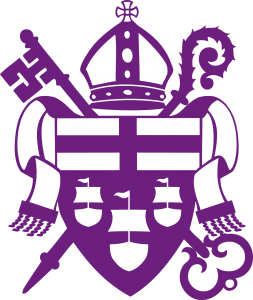
The Diocese of Virginia is the largest diocese of the Episcopal Church in the United States of America, encompassing 38 counties in the northern and central parts of the state of Virginia. The diocese was organized in 1785 and is one of the Episcopal Church's nine original dioceses, with origins in colonial Virginia. As of 2018, the diocese has 16 regions with 68,902 members and 180 congregations.
The history of the Episcopal Church in the United States of America has its origins in the Church of England, a church which stresses its continuity with the ancient Western church and claims to maintain apostolic succession. Its close links to the Crown led to its reorganization on an independent basis in the 1780s. In the nineteenth and early twentieth centuries, it was characterized sociologically by a disproportionately large number of high status Americans as well as English immigrants; for example, more than a quarter of all presidents of the United States have been Episcopalians. Although it was not among the leading participants of the abolitionist movement in the early 19th century, by the early 20th century its social engagement had increased to the point that it was an important participant in the Social Gospel movement, though it never provided much support for the Prohibitionist movement. Like other mainline churches in the United States, its membership decreased from the 1960s. This was also a period in which the church took a more open attitude on the role of women and toward homosexuality, while engaging in liturgical revision parallel to that of the Roman Catholic Church in the post Vatican II era.
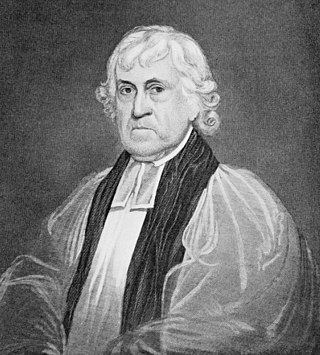
Abraham Jarvis was the second American Episcopal bishop of the Episcopal Diocese of Connecticut and eighth in succession of bishops in the Episcopal Church. He was a high churchman and a loyalist to the crown.
Connecticut's Historic Gardens are eleven historic gardens scattered across the American state of Connecticut.

James Lloyd Breck was a priest, educator, and missionary of the Episcopal Church in the United States of America.

The Quaker Farms Historic District is a historic district in the town of Oxford, Connecticut, United States. It encompasses a small rural village on Quaker Farms Road anchored by the Christ Church Episcopal, an 1812 wood-frame church with Federal and Gothic styling, located at 470 Quaker Farms Road. The district also includes eleven houses, built between the mid-18th and mid-19th centuries. The oldest houses date to the 1720s, and the church has a particularly well-preserved early 19th-century interior, albeit with some alterations. One house was built about 1800 as a carriage manufactory. The district was listed on the National Register of Historic Places in 1991.

St. Thomas' Episcopal Church is located on Leedsville Road in Amenia Union, New York, United States. It is a mid-19th century brick church designed by Richard Upjohn in the Gothic Revival architectural style, built for a congregation organized shortly before.
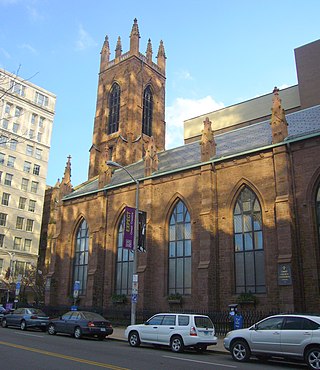
Christ Church Cathedral is a historic church at 955 Main Street in downtown Hartford, Connecticut. Built in the 1820s to a design by Ithiel Town, it is one of the earliest known examples of Gothic Revival architecture in the United States. It was listed on the National Register of Historic Places in 1983. It is the cathedral church of the Episcopal Diocese of Connecticut, whose offices are next door at 45 Church Street.
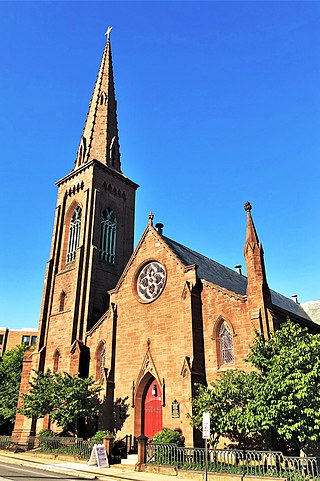
St. James Episcopal Church at 76 Federal Street at the corner of Huntington Street in New London, Connecticut is a historic church in the Episcopal Diocese of Connecticut. The congregation was founded in 1725, and the current church – the congregation's third – was built from 1847 to 1850 to designs in the Gothic Revival style by Richard Upjohn.
Robert Marshall Anderson was the Seventh Bishop of Minnesota in the Episcopal Church.

Munstead Wood is a Grade I listed house and garden in Munstead Heath, Busbridge on the boundary of the town of Godalming in Surrey, England, 1 mile (1.6 km) south-east of the town centre. The garden was created by garden designer Gertrude Jekyll, and became widely known through her books and prolific articles in magazines such as Country Life. The Arts and Crafts style house, in which Jekyll lived from 1897 to 1932, was designed by architect Edwin Lutyens to complement the garden.

The Woodbury Historic District No. 1 encompasses the linear town center of Woodbury, Connecticut. Extending along two miles of Main Street, from Flanders Road in the north to Old Sherman Hill Road in the south, the district represents an architectural cross section of the town history, from the late 17th century to the present. It was added to the National Register of Historic Places on March 11, 1971.

St. Paul's Episcopal Church is located at 113 Engle Street at the corner of Church Street in Englewood, in Bergen County, New Jersey, United States. The congregation was organized in 1865, and their first church was erected in 1866. It is a parish of the Episcopal Diocese of Newark and the worldwide Anglican Communion.

The Jabez Bacon House is a historic house on Hollow Road in Woodbury, Connecticut. Built in 1760 for a prominent regional merchant, it is a well-preserved example of Georgian architecture. It was listed on the National Register of Historic Places in 1971.
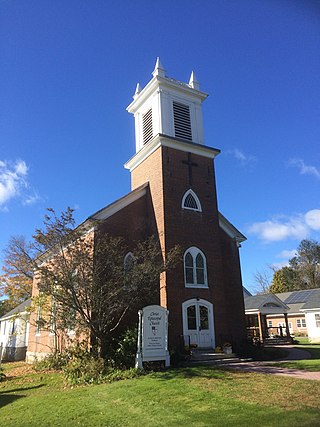
Christ Episcopal Church is a historic Episcopal church located on the town green of Bethlehem, Connecticut. Founded as a parish early in the 19th century, it has been a central part of the life of the town ever since. The building is an outstanding example of Gothic Revival architecture, and its unique metal roof helps incorporate it visually with other historic buildings in the area around the green. Major renovations were designed by R. W. Hill, a noted Waterbury architect, early in his career. It also houses a Jardine tracker organ designed in 1855. Along with the First Congregational Church across the street and the Bellamy-Ferriday House on another side of the town green, Christ Episcopal Church helps anchor the historic center of this small rural town in Litchfield County, Connecticut.
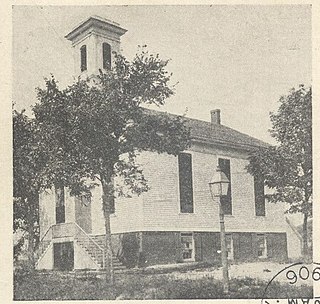
Bishop Seabury Anglican Church is a historic Anglican church located in Gales Ferry, Ledyard, Connecticut. Founded in Groton in 1875 as part of the Episcopal Diocese of Connecticut and named in honor of Samuel Seabury, the congregation left the Episcopal Church during the Anglican realignment and is now a member of the Anglican Diocese of the Living Word in the Anglican Church in North America. In leaving the Episcopal Church, Bishop Seabury lost in litigation seeking to retain its building, and since 2018 the church has been located in the former Gales Ferry Methodist Church, built in 1857, a contributing property to Gales Ferry Historic District #2.



















